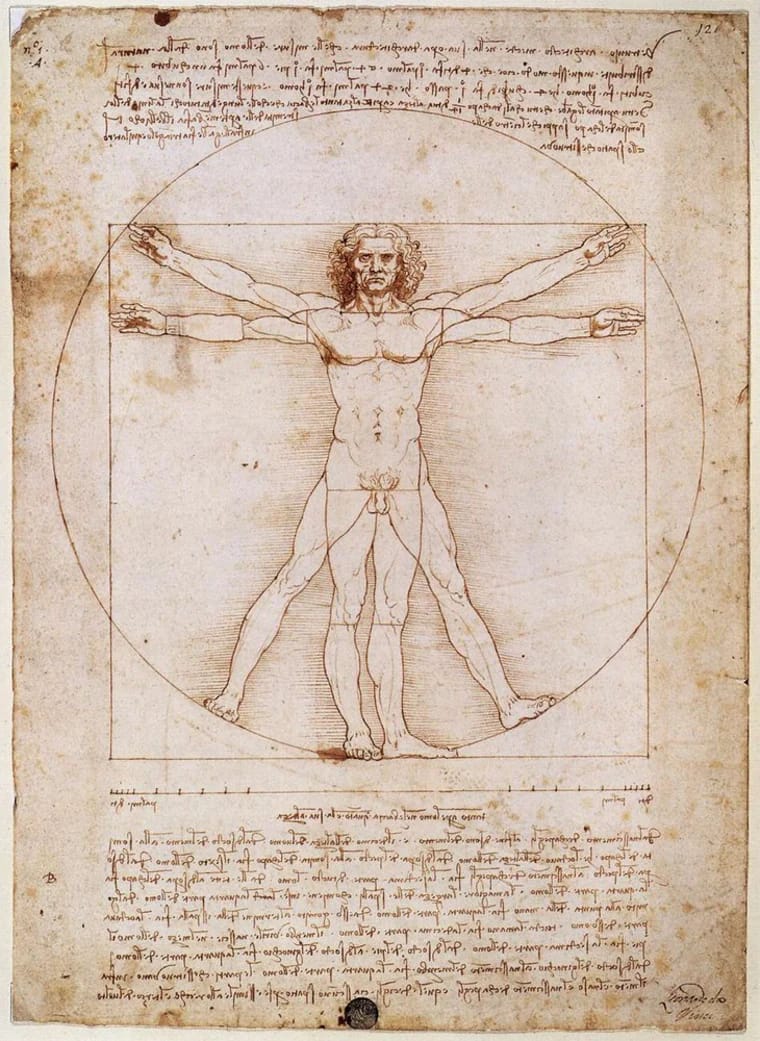
ChatGPT
The artwork you provided is Leonardo da Vinci’s “Vitruvian Man,” a famous drawing that exemplifies the blend of art and science during the Renaissance. The circle and the square are essential elements in this drawing and serve significant artistic and symbolic purposes.
- Symbolic Representation of Human Proportions: The circle and square are used to demonstrate the ideal human proportions as described by the ancient Roman architect Vitruvius. Vitruvius believed that the human body could be used as a model of proportionality in architecture. The circle and square, geometric shapes considered perfect in Renaissance art, highlight the belief that the human body itself is a model of perfection and harmony.
- Mathematical and Philosophical Concepts: The circle, often associated with celestial and divine perfection, surrounds the figure, symbolizing the infinite and the universe. The square, associated with the earthly and the material world, grounds the figure in reality. This duality reflects the Renaissance interest in the connection between the divine and the human, the cosmos and the earth.
- Scientific Study of Anatomy and Proportion: Leonardo used these shapes to explore the mathematical relationships within the human body. By placing the figure within both a circle and a square, he illustrates how different parts of the body relate to each other proportionally. This approach exemplifies the merging of artistic skill and scientific inquiry, characteristic of da Vinci’s work.
- Humanism and Renaissance Thought: The use of geometric shapes to frame the human figure emphasizes the Renaissance humanist belief in the centrality of humans in the universe. It celebrates human potential, intellect, and the pursuit of knowledge. The Vitruvian Man is often seen as a visual representation of the Renaissance ideal that man is a measure of all things.
The combination of these elements in the “Vitruvian Man” showcases Leonardo da Vinci’s mastery in merging art, science, and philosophy into a single, cohesive work of art.
For more detailed analysis, you can refer to the following sources:
- Vitruvian Man – Britannica
- Leonardo da Vinci’s “Vitruvian Man” – Khan Academy
- The Mathematical and Anatomical Precision of the Vitruvian Man



